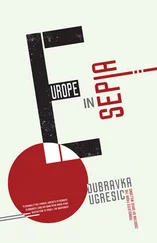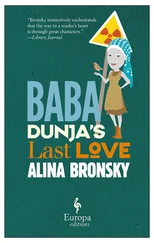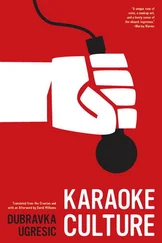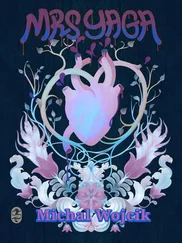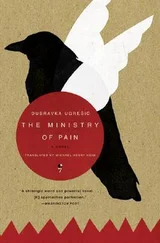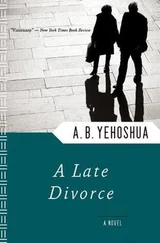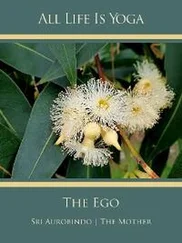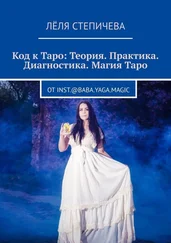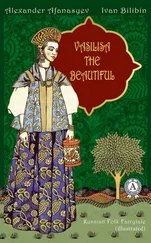* * *
Baba Yaga’s reactions to women are misogynistic, and she is prone to excessive rivalry with young heroines. Generally she treats the heroines as her servants, finding barely possible tasks for them to perform around the hut. [34] Baba Yaga drives away Vassilisa, who, on completing Baba Yaga’s tasks, helps the mother’s spirit that is embodied in a doll: ‘You know what, blessed daughter, be off with you! I don’t need blessed ones!’ (From Vassilisa the Beautiful )
Yet, more often, she appears as a helpmeet and liberator of maidens in misfortune. Even when by mishap she loses her own daughter (or daughters), Baba Yaga seems preoccupied less by despair over her loss than by anger and desire for revenge. She is evil to boys, she’ll eat them up, but she is kind to young men, virtually submissive: she’ll give them food and drink, chat with them, give them magic objects that save them from misfortune and help them in their relationships with beloved maidens. And if the heroes are nice and polite, Baba Yaga and her sisters turn into love-able, generous grannies. [35] – ‘And you, granny, rest your old head on my strong shoulder, and tell me what to do.’ – ‘Many’s the young man that has passed this way, but very few that spared a kind word for me. Take my horse, child. It is faster than your own, it will carry you to my middle sister, she will advise you what you should do next.’ (From About the Apples that Restore Youth and the Living Water)
Although she is surrounded by hypertrophied female symbols (big breasts, the mortar, the hut, the oven), Baba Yaga has certain male characteristics as well. She speaks in a basso profundo voice, she has a long nose, a bone or iron leg, long iron teeth and – she can’t cook! She often serves inedible stuff to her guests: iron bread, salty cakes, soup with children’s fingers or spittle swimming around in it. And Baba Yaga often talks ‘like a man’. In the tale Go there – I know not where – and bring me back a thing I lack , Baba Yaga says: ‘He is an ordinary fellow; we could deal with him easily – like taking snuff.’ In other words, Baba Yaga knows about taking snuff.
Baba Yaga’s one and only rival among men is Koshchey the Deathless. While she respects him, Baba Yaga won’t hesitate to give away the secret of his strength to the young hero. Koshchey the Deathless expresses the same kind of respect for and rivalry with Baba Yaga. [36] ‘I know it very well!’ says Baba Yaga. ‘She is with Koshchey the Deathless. It will be difficult to reach her; it is no simple matter to deal with Koshchey the Deathless: his death rests on the point of a needle, that needle lies inside an egg, the egg is inside a duck, the duck is inside a rabbit, the rabbit is inside a trunk, the trunk is at the top of a tall oak tree and Koshchey guards that tree as if it were his own eye.’ (From The Emperor’s Frog Daughter ) – ‘Beyond thirty lands, even the thirtieth kingdom, beyond the fiery river, lives Baba Yaga. She has a mare that can circle the earth every day. She has many other fine mares besides. I was her shepherd for three days together, I did not lose a single mare, and afterwards Baba Yaga gave me a foal for my pains.’ (From Marja Morevna )
By combining such (potentially) female and male symbols, Baba Yaga is, psychoanalytically speaking, what’s called a phallic mother. Some interpreters (such as Geza Roheim) see Baba Yaga’s hut as an image of heterosexual coitus. The image of Baba Yaga – sprawling in her hut with legs spread wide, breasts dangling over a pole, nose poking the ceiling – is really (from a child’s point of view) a matter of the child confronting its parents’ coitus. Other details can be explained in a similar way, for example Baba Yaga’s cannibalism may be a projection of a child’s aggressive hunger. A hungry child wants to eat its mother. Conversely, the mother is a cannibal who wants to eat her own child.
* * *
Vladimir Propp explains Baba Yaga’s masculine attributes as a travesty (disguising a man as an old woman) of tribal rituals for the transition from matriarchy to patriarchy. The tribal mother acts the part of a man dressed as a woman, hence a man with a phallus and women’s breasts. There is an interesting detail in Andreas Johns’s book about Baba Yaga. One of the folktales describes how the hero strikes Baba Yaga with a magical wand, and she turns into a woman (!). If Baba Yaga has the ability to turn into different things, to become an intermediary between worlds, the non-human (fantastical, forested, subterranean or unconscious) and the human, then her androgynous nature – or her role of mediating between genders – becomes understandable. [37] The most interesting tale from the transsexual point of view comes from Bulgaria: The Old Woman’s Maiden (Babinoto devojče). Several times, the old woman’s maiden puts on a man’s clothes and saves the emperor’s daughter. The emperor offers her his daughter’s hand in marriage, but the false young man thrice refuses to become the emperor’s son-in-law. In truth, the maiden is more interested in the dragon, whose prisoner she was for some time, but the dragon is angry with her because she accidentally burned him with candle wax (castrated him?), and the wound won’t heal. She tries to return to the dragon several times, but the dragon harshly spurns her, sending her to one of the lower kingdoms. These kingdoms are, amazingly, arranged like the floors in a high-rise building: three above, six below. In the end, the maiden is forced to change gender when she is turned, magically and forever, into a young man, who then marries the emperor’s daughter.
Remarks
Your author’s heroes are mostly women. The female characters chop and change their roles around, or, more precisely, they assimilate and overlap each other. The daughter in the first part of the diptych takes over the role of the mother: she is not only her nurse but at one moment she becomes her surrogate, her bedel. Kukla has no children. In the web of psychoanalytic meanings, Kukla could be a man, as for that matter all the heroines could be. Beba has a homosexual son, but he is more mature than she, taking over the role of the mother which she herself, allegedly, has not been able to fulfil, and leaving her his adopted daughter. Overall, your author’s diptych could be an interesting field for reading-in and reading-out gender meanings.
‘The archer returned from the stable; that same moment, the servants grabbed him and shoved him in the cauldron. He roused himself, jumped out of the cauldron – and turned into such a handsome fellow that he cannot be described by mouth or pen.’
(From
The Firebird and the Empress Vassilisa .)
In all cosmogonic myths, including the Slavic ones, water means primeval chaos, the original principle and creation of the world. In Slavic beliefs, water flows through the earth’s veins like blood through the human body. Many Slavic beliefs, customs, rituals, demons ( vodjanoj, vodjanika, vodnik , vodjanik, vodovik, rusalka ) and saints (the pre-Christian goddess Mokosh and her Christian descendant St Paraskeva, also known as St Petka) are linked with water. For water is an ambivalent principle: it brings evil ( Gde voda tam beda / Where there’s water, there’s misery), but also cleansing and renewal.
The banya (bath, spa, sauna) has a special place in Slavic folklore, for the Russians above all. The bath is in principle a dirty place, but also a site of purification: you soak in the hot water, letting it chase away illnesses, spells, the thoughts of evil people and so forth. The spirit called Bannik lives there (also known as Bajnik, Bajennik, Bajnushko, Laz’nik ). He is either invisible or takes the appearance of a naked, dirty, long-haired old man whose body is caked with mud and leaves. A female spirit lives in the baths as well: Obderiha is a frightful hairy old woman who appears naked or in the shape of a cat, and lives under a little wooden bench. Shishiga is a female demon that takes the shape of a relative or acquaintance, luring people into the baths where they suffocate in the steam.
Читать дальше

